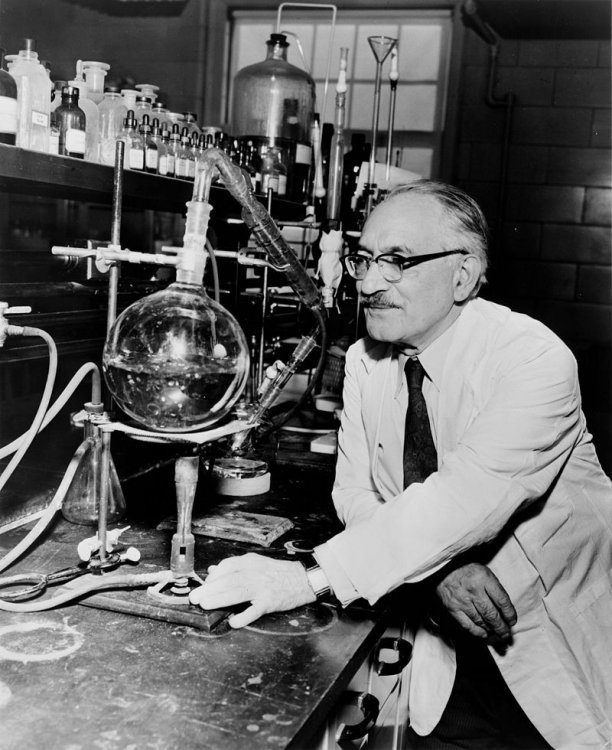Selman Waksman isolated streptomycin on October 19, 1943
At all times, science has been in search of answers to many questions, and the most important one is how to make people healthy and be able to fight various diseases. The answer was found in the times of Louis Pasteur and famous Russian scientist Ilya Mechnikov: certain microbes can be used to destroy others. Mechnikov wrote that “when fighting each other, microbes produce specific substances as means of defense and attack.” All these antibiotics – weapons of certain microbes for killing other microbes, and currently existing penicillin, streptomycin, etc. – are obtained as metabolic byproducts of bacteria, mold and actinomycetes. These substances destruct pathogenic microbes or slow down their growth. The era of antibiotics in its modern sense began with the discovery of penicillin by Alexander Fleming who published a research report on a substance isolated from mold colonies in 1929. During this time period, there have been many important discoveries that saved many lives. In particular, streptomycin was isolated.
Molecular formula
C21H39N7O12
In 1941, American scientist Selman Waksman isolated actinomycin from Streptomyces antibioticus. The event became a turning point in medical history. The discovery was made at Rutgers, the State University of New Jersey, in the United States.
A few years later, on October 19, 1943, Waxman and Albert Schatz isolated streptotricin from Sir. lavendulae. However, these substances did not immediately come into common use because of their strong toxic properties. They became a reliable aid to the Waxman and his collaborators’ discovery of the well-known antibiotic streptomycin in 1943. This discovery gave hope for recovery to patients with tuberculosis.
The discovery of streptomycin with its valuable properties prompted science to study actinomycetes and look for producers of new antibiotic substances among them. This endeavor was crowned with success: such antibiotics as chloromycetin (chloramphenicol), neomycin, chlortetracycline, tetracycline and other biologically active compounds were discovered. However, the most important value of streptomycin is its efficacy for tuberculosis. The substance is an aminoglycoside antibiotic, therefore, like other substances from this group, it inhibits protein synthesis. Streptomycin binds to protein S12 (rpsL gene) in the 30S ribosome subunit, which disrupts the translation process.
In 1952, Zelman Waxman’s discovery was noted by the professional community: the scientist was awarded the Nobel Prize in Physiology or Medicine “for his discovery of streptomycin, the first antibiotic effective against tuberculosis.” Now streptotricin is included into the World Health Organization's Model List of Essential Medicines for health systems.
Photo on the page: doc-tv.ru
Photo on the home page: megainteresting.com






















